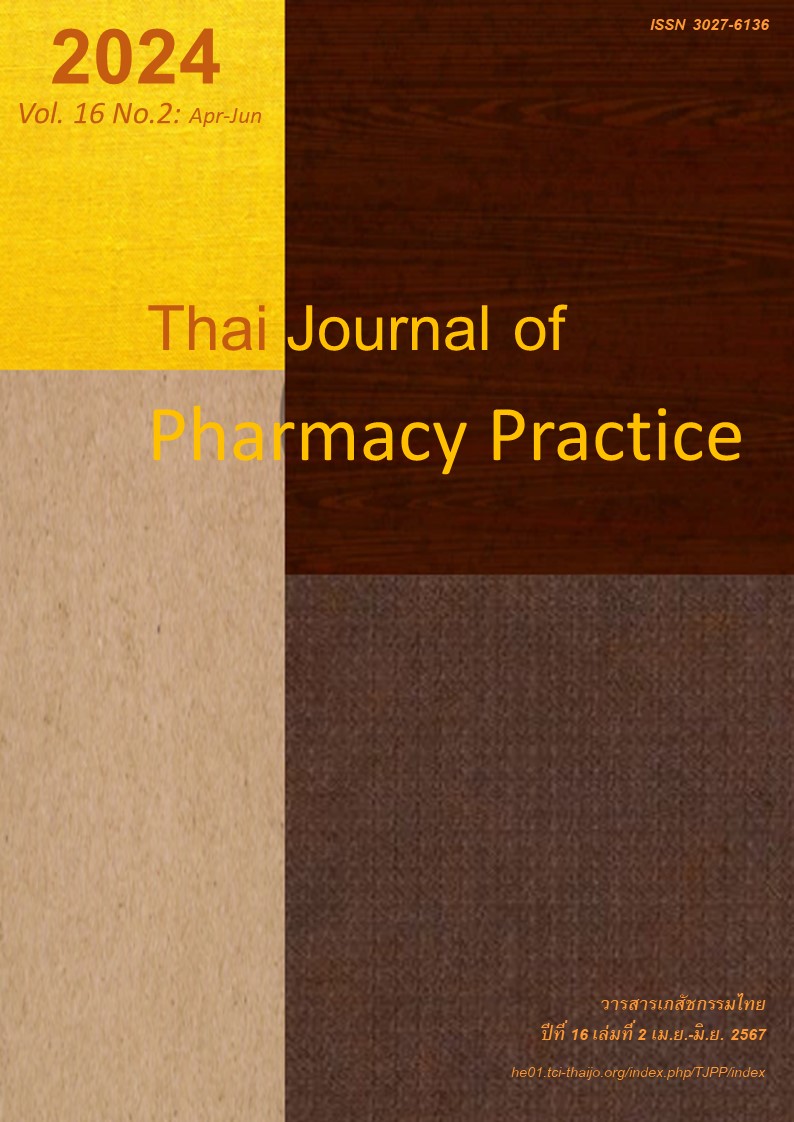Development and Validation of the Knowledge Test on Balanced Diet Consumption for Cambodian University Students
Main Article Content
Abstract
Objective: To develop and validate the Knowledge Test on Balanced Diet Consumption (KTBDC) for Cambodian university students based on the recommendation for balanced diet consumption of the World Health Organization. Methods: Literature review and individual face to face interview with Cambodian university students were used to guide the development of the KTBDC. The developed KTBDC consisted of 25 questions with the contents on knowledge on general recommendations for balanced diet consumption, calorie comparison and estimation of the amount of carbohydrate, protein, and fiber in food. Three response options for each question were “yes”, “no” and “don’t know”. Each question was assessed for its face validity and content validity, using item objective congruence index (IOC), by 3 experts. Subsequently, the KTBDC was administered to 95 university students at bachelor’s degree level in Cambodia. Difficulty index (Pi) and discrimination power index (Di) were calculated for each question. The overall difficulty and discrimination power of the KTBDC were calculated from the average difficulty index () and the average discrimination power index () respectively. The reliability of the test was assessed using Kuder-Richardson 20 (KR-20). Results: Fifty subjects were female (52.6%). Mean age of the subjects was 22.3±1.9 (rage: 18-27) years old. All 25 questions being developed had the IOC score> 0.5. The overall difficulty index of the KTBDC was at moderate level (: 0.49) and the overall discrimination power index was at an excellent level ( >0.67). The overall reliability was 0.92. Conclusion: The KTBDC was congruent with the objective of the test, and the internal consistency of the test was high, suggesting that it was a valid and reliable test to assess knowledge about balanced diet consumption in Cambodian university students. The future study should focus on the generalizability of the test to other populations and contexts to ensure that it is appropriate for broader use.
Article Details

This work is licensed under a Creative Commons Attribution-NonCommercial-NoDerivatives 4.0 International License.
ผลการวิจัยและความคิดเห็นที่ปรากฏในบทความถือเป็นความคิดเห็นและอยู่ในความรับผิดชอบของผู้นิพนธ์ มิใช่ความเห็นหรือความรับผิดชอบของกองบรรณาธิการ หรือคณะเภสัชศาสตร์ มหาวิทยาลัยสงขลานครินทร์ ทั้งนี้ไม่รวมความผิดพลาดอันเกิดจากการพิมพ์ บทความที่ได้รับการเผยแพร่โดยวารสารเภสัชกรรมไทยถือเป็นสิทธิ์ของวารสารฯ
References
World Health Organization. WHO nutrient profile model for South-East Asia Region. Genva: World Health Organization; 2017.
Sophal O, Piseth RP, Eng MK, Vannareth M, Sothea A, Youttiroung B, et al. Prevalance of non-communicable disease risk factors in Cambodia, STEPS survey, Country report; 2010. Phnom Penh, Cambodia: University of Health Sciences. Available from: https://extranet.who.int/ncdsmicrodata/index.
php/catalog/378/download/2863
Stok FM, Renner B, Clarys P, Lien N, Lakerveld J, Deliens T. Understanding eating behavior during the transition from adolescence to young adulthood: A literature review and perspective on future research directions. Nutrients. 2018; 10: 667. doi: 10.3390/nu10060667.
Crombie AP, Ilich JZ, Dutton GR, Panton LB, Abood DA. The freshman weight gain phenomenon revisited. Nutr Rev 2009; 67: 83-94.
Racette SB, Deusinger SS, Strube MJ, Highstein GR, Deusinger RH. Changes in weight and health behaviors from freshman through Senior year of college. J Nutr Educ Behav 2008; 40: 29-42.
Vella-Zarb RA, Elgar FJ. The ‘Freshman 5’: A meta-analysis of weight gain in the freshman year of college. Am Coll Health 2009; 58: 161-6.
Mokdad AH, Serdula MK, Dietz WH, Bowman BA, Marks JS, Koplan JP. The spread of the obesity epidemic in the United States, JAMA 1999; 282: 1519-22.
Sogari G, Velez-Argumedo C, Gómez MI, Mora C. College students and eating habits: A study using an ecological model for healthy behavior. Nutrients 2018; 10: 1823. DOI: 10.3390/nu10121823.
Wang J. A behavioral model for analysis and intervention of healthy dietary behavior. Glob J Health Sci. 2020; 12: 57. DOI: 10.5539/gjhs.v12n 4p57.
Lok B, McNaught C, Young K. Criterion-referenced and norm-referenced assessments: compatibility and complementarity. Assess Eval High Educ 2016; 41: 450-65.
Great Schools Partnership. Criterion-referenced test definition [online]. 2014 [cited Mar 16, 2023]. Available from: www.edglossary.org/criterion-referen ced-test/
Turner RC, Carlson L. Indexes of item-objective congruence for multidimensional items. Int J Test 2003; 3: 163-71.
Siltrakool B. Assessment of community pharmacists ’ knowledge , attitude and practice regarding non-prescription antimicrobial use and resistance in Thailand [master thesis]. Bangkok: Chulalongkorn University; 2018.
Perneger T V, Courvoisier DS, Hudelson PM, Gayet-Ageron A. Sample size for pre-tests of questionnaires. Qual Life Res 2015; 24: 147-51.
Backhoff E, Larrazolo N, Rosas M. The level of difficulty and discrimination power of the basic knowledge and skills examination [online]. 2000 [cited Mar 16, 2023]. Available from: redie.uabc.mx/ vol2no1/contents-backhoff.html
Azzopardi M, Azzopardi C. Relationship between item difficulty level and item discrimination in biology final examinations [online]. 2019 [cited Mar 16, 2023]. Available from: end-educationconference.org /2019/wp-content/uploads/2020/05/2019v2end001. pdf
Welkowitz J, Cohen BH, Lea RB. Introductory statistics for the behavioral sciences. 7th ed. Hoboken, NJ: John Wiley &Sons; 2012.
OECD 2012. Translation and verification of the test and survey material [online]. 2012 [cited Mar 16, 2023]. Available from: www.oecd-ilibrary.org/educa tion/pisa-2009-technical-report/translation-and-verifi cation-of-the-test-and-surveymaterial_97892641678 72-6-en

